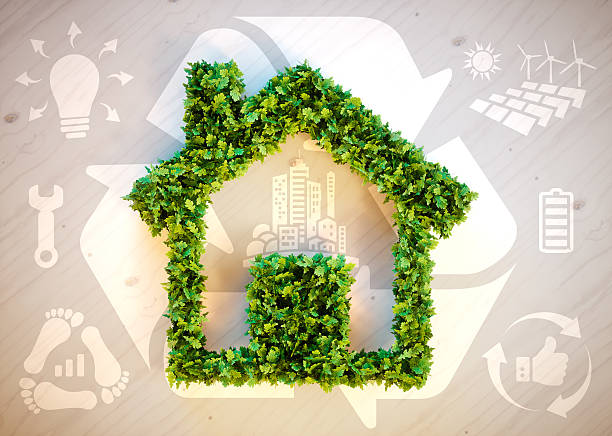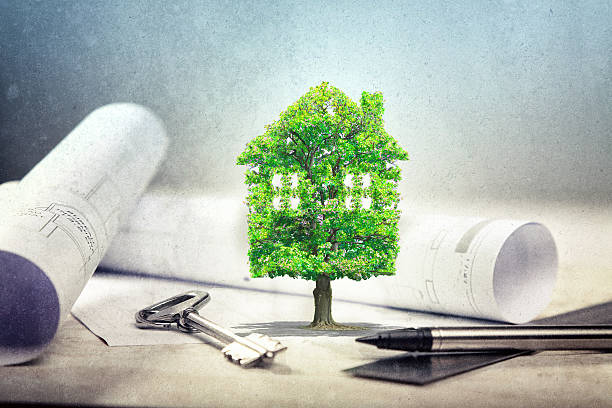Enquire Now
Submit your request and our design expert will get in touch with you.

The global paradigm shift towards sustainability has made its presence felt in various sectors, and the realm of architecture is no exception. As the ramifications of climate change become ever more apparent, it’s imperative for architects to reconsider traditional design principles and integrate eco-friendly methodologies. Crafting a house that not only stands as a testament to aesthetic appeal but also to environmental conscientiousness is the new mandate.

When discussing the implementation of these principles in the Indian context, particularly in Ghaziabad and Lucknow, one cannot overlook the contributions of Raghava Architects. As one of the best architectural firms in the region, they have pioneered the fusion of traditional Indian architectural styles with modern sustainable practices.
Raghava Architects’ designs often reflect a deep appreciation for India’s rich architectural history while embracing modern eco-conscious strategies. Their projects in Ghaziabad and Lucknow, in particular, showcase a blend of aesthetic beauty and environmental responsibility. By prioritizing locally sourced materials, they not only reduce transportation emissions but also boost the local economy. Their designs consistently factor in the region’s sunny climate, optimizing for passive solar heating and ample natural light.
Another commendable feat by Raghava Architects is their community-centric approach. Recognizing the importance of water in these regions, they have been instrumental in integrating rainwater harvesting systems in many of their residential projects. Their designs also often incorporate shared green spaces, promoting both biodiversity and community bonding.
The rapid advancements in technology have brought forth innovations that architects can weave into their designs. Smart homes, once considered a luxury, are now being recalibrated to serve the environment. Advanced home automation systems can regulate energy usage, ensuring appliances are only active when necessary, and optimizing heating and cooling systems for energy efficiency.
Raghava Architects, in particular, have embraced the use of cutting-edge technologies. Their integration of sensor-driven skylights, for instance, allows homes to harness natural light effectively, adapting to changing weather conditions and times of day. This marriage of tech with sustainability results in homes that are both futuristic and eco-friendly.

A truly sustainable design approach goes beyond the walls of a home. Sustainable landscaping, for instance, is a domain where architects can exercise immense influence. By choosing native plants that are naturally adapted to the local climate and soil conditions, architects can create gardens that require less water, pesticides, and fertilizers.
Raghava Architects emphasizes this holistic philosophy. Their projects often feature kitchen gardens, encouraging homeowners to grow their own produce, reducing carbon footprints associated with food transport. They also champion the creation of green roofs, which offer insulation benefits, reduce rainwater runoff, and provide spaces for urban farming.
While architects play a pivotal role, community awareness and engagement are just as crucial. An eco-friendly house isn’t just a passive structure; it requires active participation from its residents to realize its full potential.
Raghava Architects stands out in this regard. Beyond their architectural endeavors, they have initiated several community workshops in Ghaziabad and Lucknow. These sessions educate residents on the principles of sustainable living, from composting kitchen waste to practicing water conservation.

As urban areas expand, the demand for housing will surge. This exponential growth presents both a challenge and an opportunity. The architectural decisions made today will influence urban landscapes for decades, if not centuries, to come.
In regions like Ghaziabad and Lucknow, where rapid urbanization meets rich historical tapestry, the stakes are even higher. But with firms like Raghava Architects at the forefront, the future seems promising. Their commitment to weaving sustainability with aesthetic appeal represents the path forward.
In the end, architecture is more than just bricks and mortar; it’s about crafting spaces that nurture and sustain. As environmental concerns rise, the principles of sustainable architecture don’t just serve as guidelines – they represent a profound commitment to the future. With architects, communities, and homeowners working hand-in-hand, the vision of eco-friendly abodes isn’t just attainable; it’s inevitable.